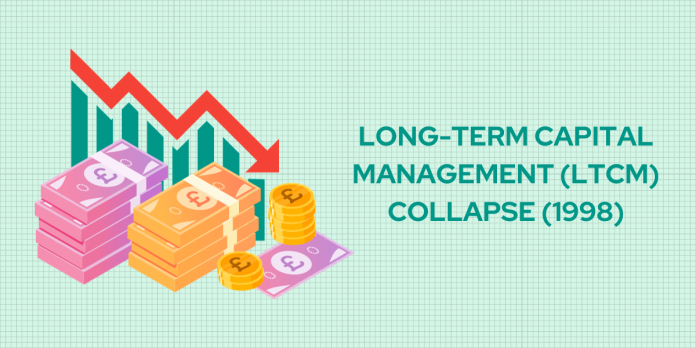In 1994, John Meriwether started Long-Term Capital Management, a hedge fund that aimed to make money by combining the skills of academics and traders. Big investors put in $1.3 billion at first. But by 1998, the fund was about to go under because of big losses. To prevent a global financial crisis, the Federal Reserve arranged a $3.5 billion rescue. In return for the bailout, the banks involved got 90% of LTCM’s ownership.
LTCM was a hedge fund that aimed for success from the start. It was led by John Meriwether, a renowned bond trader from Salomon Brothers. The firm also had Nobel-prize winning economists Myron Scholes and Robert Merton, along with David Mullins, a former vice-chairman of the Federal Reserve Board. These impressive credentials attracted 80 founding investors, including Bear Sterns President James Cayne and his deputy. Merrill Lynch also invested heavily in LTCM, offering it to its wealthy clients, including its executives and CEO, David Komansky. A similar strategy was employed by the Union Bank of Switzerland.
Their strategy was to find mispriced securities and buy the cheap ones while selling the expensive ones. They focused on four types of trades:
- Convergence among U.S., Japan, and European sovereign bonds,
- Convergence among European sovereign bonds,
- Convergence between on-the-run and off-the-run U.S. government bonds,
- Long positions in emerging markets sovereigns, hedged back to dollars,
Since the price differences were small, they needed to borrow heavily to make big profits. By early 1998, they had $5 billion in equity and $125 billion in debt, a leverage ratio of about 30 to 1. They believed their computer models showed their positions had low net risk.
Events timeline
- 1994: Long-Term Capital Management (LTCM) is founded and gains $7 billion under management.
- 1997: LTCM returns $2.7 billion to investors due to a lack of investment opportunities.
- 1998: LTCM’s portfolio grows to over $100 billion and its swaps position reaches $1.25 trillion.
- August 1998: Russia devalues the rouble, causing a “flight to quality” and a liquidity crisis that hits LTCM’s portfolio.
- September 1998: LTCM equity drops to $2.3 billion and offers investors a chance to invest on special terms.
- September 1998: LTCM’s equity drops to $600 million and banks begin to doubt its ability to meet margin calls.
- September 1998: The Federal Reserve Bank of New York organizes a rescue package to prevent a systemic meltdown, injecting $3.5 billion into LTCM and taking over its management.
- Fourth quarter 1998: The LTCM crisis caused widespread losses for banks, leading to resignations at UBS and Merrill Lynch.
- April 1999: President Clinton publishes a study on the LTCM crisis and its implications for systemic risk.
Analysing the fall of LTCM
The Proximate Cause: Russian Sovereign Default
LTCM’s downfall was caused by Russia’s default on its government bonds. LTCM thought they had protected themselves by selling rubles, but when Russia’s currency collapsed, the banks that were supposed to guarantee their hedge shut down, and the Russian government stopped trading in its currency. This caused LTCM to lose a lot of money, but it wasn’t enough to bring them down. The real cause of their demise was the flight to liquidity that happened afterwards.
The Ultimate Cause: Flight to Liquidity
The collapse of Long-Term Capital Management (LTCM) was caused by a “flight to liquidity” in the global fixed-income markets. As investors sold off risky assets, they rushed to buy the most liquid assets, such as U.S. Treasury bonds. This caused the price of Treasuries to go up and the price of other assets, such as those held by LTCM, to go down.
Systemic Risk: The Domino Effect
LTCM’s trading strategy was heavily exposed to this change in liquidity, and its losses quickly mounted. The firm was on the verge of collapse, which would have had a domino effect on other leveraged players in the market. To prevent this, a consortium of banks bailed out LTCM, but the crisis highlighted the systemic risks posed by leveraged trading strategies.
Lessons to be learned from this LTCM Crisis
- Risk management is key: Be prepared for unexpected events and don’t over-rely on models.
- Always expect the unexpected: Be ready for black swan events.
- Models have limitations: Markets can behave differently during stressful times.
- Avoid hubris and arrogance: Always be open to being wrong.
- Use caution with leverage: Leverage can amplify losses.
- Consider liquidity: Be mindful of how easily you can exit an investment.


